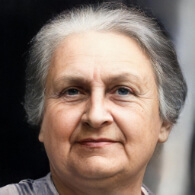Translations:3-Hour Work Cycle (Montessori)/6/de: Difference between revisions
From Montepedia
MontessoriX (talk | contribs) (Created page with "== Anwendung in Montessori-Schulen == Der 3-Stunden-Arbeitszyklus wird in Montessori-Schulen weltweit eingesetzt, von Vorschulen bis zu Grundschulen<ref>Montessori, M. (1967). The discovery of the child. Ballantine Books</ref>. Er gilt als Eckpfeiler der Montessori-Pädagogik und wird konsequent in verschiedenen Kulturen und Kontexten umgesetzt<ref>Lillard, A. S. (2017). Montessori: The science behind the genius. Oxford University Press.</ref>. Die Kraft des Spiels und d...") |
m (FuzzyBot moved page Translations:3-Hour Work Cycle/6/de to Translations:3-Hour Work Cycle (Montessori)/6/de without leaving a redirect: Part of translatable page "3-Hour Work Cycle") |
(No difference)
| |
Latest revision as of 15:21, 17 July 2023
Anwendung in Montessori-Schulen
Der 3-Stunden-Arbeitszyklus wird in Montessori-Schulen weltweit eingesetzt, von Vorschulen bis zu Grundschulen[1]. Er gilt als Eckpfeiler der Montessori-Pädagogik und wird konsequent in verschiedenen Kulturen und Kontexten umgesetzt[2]. Die Kraft des Spiels und die Bedeutung des selbstgesteuerten Lernens werden zunehmend im breiteren Bildungsbereich anerkannt[3].
- ↑ Montessori, M. (1967). The discovery of the child. Ballantine Books
- ↑ Lillard, A. S. (2017). Montessori: The science behind the genius. Oxford University Press.
- ↑ Yogman, M., Garner, A., Hutchinson, J., Hirsh-Pasek, K., & Golinkoff, R. M. (2018). The Power of Play: A Pediatric Role in Enhancing Development in Young Children. Pediatrics, 142(3).[1]
